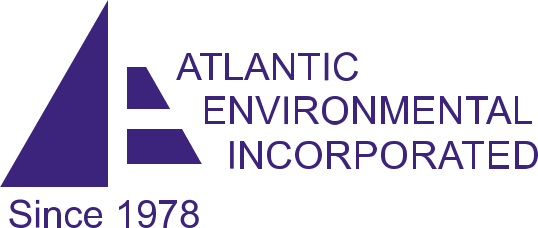If you need crystalline silica sampling and/or testing of workers discussed in this article, call us at 973-366-4660 or email us at info@atlenv.com for details and a free estimate.
Written By: Robert E. Sheriff, MS, CIH, CSP, President
February 19, 2020; Updated August 2021
Crystalline Silica: Sampling of Workers for Respirable Silica – Alpha Quartz, Tridymite, Cristobalite
Crystalline silica has been classified as a lung carcinogen. OSHA issued its final rules for controlling worker exposure to crystalline silica on March 23, 2016. The specific OSHA regulation is 29CFR1926.1153 (Construction Standard) and 29CFR1910.1053 (General Industry/Marine). Locations in which workers handle sand (silica) such as concrete mixing, paving, gravestones, countertops, oil and gas fracking, marble products, crushed stone products, an sandblasting all require air sampling to define exposure and the need for engineering controls or respiratory protection for workers.
Crystalline Silicas Damage to the Lungs
Although silica is one of the more common elements on earth, it’s the crystalline form of silica that can cause serious damage to the lungs—and even be fatal. The lung condition is called silicosis. The crystalline silica scars the lungs and such scarring becomes progressive—subsequently leading to further lung damage, tuberculosis, and lung cancer. OSHA has set the Permissible Exposure Limit (PEL) at 50 micrograms per cubic meter (50 ug/m3) and the action level at 25 ug/m3. There are 3 species of crystalline silica: Alpha Quartz, Tridymite, and Cristobalite. Under the new OSHA regulations, all 3 are treated equally—Same PEL.
Formerly the PEL was based on a formula where the increase in the percent of silica decreased the allowable PEL, but this could be quite confusing to interpret.
Sampling The Forms of Silica; Alpha, Quartz, Cristobalite, Tridymite
Sampling for the forms of silica that cause disease (alpha quartz, cristobalite, and tridymite) involves the use of a respirable dust cyclone and a filter to capture the airborne particulates. The current use of a respirable dust cyclone that samples at 1.7 liters per minute (LPM) is not sensitive enough to reach the OSHA action level when sampling for an 8-hour time-weighted average. For an accurate sample, a respirable dust cyclone that samples at 2.4 LPM or greater is recommended for full-shift sampling.
Also, note that there are alternate methods of sampling but they should be performed by a properly equipped and knowledgeable Industrial Hygienist. The use of Objective Data for silica is allowed when and where past sampling of similar tasks showed exposure below the Action Level.
Also, ensure that the laboratory analyzing the samples is accredited by the American Industrial Hygiene Association (AIHA) and confirmed that they use the accepted method for analysis of silica samples (generally OSHA Method I.D. 142 or NIOSH 7500).
The general provisions to both Construction and General Industry are generally the same:
- Permissible Exposure Limit (PEL) over an 8-hour shift is 50 ug/M3 of air. This applies to all 3 forms of crystalline silica: alpha quartz, tridymite, cristobalite.
- The action level of 25 ug/M3 of air.
- Requires employers to use engineering controls to limit worker exposure where sampling indicates a level above the PEL. Respirators used as a supplement to engineering controls where such efforts won’t adequately control exposure.
- Develop a written silica exposure control plan.
- Medical exams implemented if workers are exposed at or above the Action Level for 30 days or more per year starting June 23, 2018.
- Training.
- Final Rule took effect on June 23, 2016, (60 days after publication).
Compliance dates for the separate regulations are different:
For Construction, the effective date is June 23, 2017.
For General Industry and Maritime, the effective date is June 23, 2018. (Note the 1-year extension over Construction).
NOTE: Hydraulic Fracking, although part of Construction, has an effective date of June 23, 2018, and engineering controls have a compliance date of June 23, 2021 (5 years!).
Those of us in the occupational health profession have expected these new regulations for some time. There are many activities in Construction and Industry where exposures have not been well controlled. Also, the previous regulation had a formula for calculating the exposure level (the greater the % silica the lower the PEL) which was confusing and difficult to explain.
The new standards have a lower PEL which provides more protection for workers. The new standards are also easier for employers to explain and easier for employees to comprehend.
From experience, the most likely sources of overexposure in Construction are:
- Dry concrete cutting
- Sand and gravel operations
- Concrete mixing—including Redimix
- Mining including rock, salt, coal, and other minerals
- Construction excavation especially where rock is involved
- Dry aspects of fracking—all stages
- Some wet concrete cutting operations.
From Experience, the most likely source of overexposure potential in General Industry are:
- Sand and concrete/mortar packaging
- Stone cutting
- Marble cutting
- Brick and block manufacturing
- Gravestone cutting and lettering
- Countertop manufacturing
- Refractory products (bricks and cement)
- Glass manufacturing
- Foundries, especially sand casting.
The final rule can be found on OSHA’s website at www.osha.gov/dsg/topics/silicacrystalline/
Atlantic Environmental has the capability of monitoring worker exposure for crystalline silica, developing silica control plans and performing the necessary training, as well as recommending solutions to identified problems where silica overexposures have occurred and where workers are prone to respirable silica.
For more information on Crystalline Silica and Sampling of Workers for Respirable Silica (Alpha Quartz, Tridymite, and Cristobalite), contact Atlantic Environmental.
Our primary service areas are New Jersey NJ, New York NY, (New York City), Pennsylvania PA, Connecticut CT, Delaware DE, Massachusetts, (Boston) MA, Rhode Island RI, Washington DC, Wisconsin WI, Maryland MD, Michigan MI, Illinois (Chicago) IL, Virginia VA, Indiana IN, Georgia (Atlanta) GA, Alabama AL, North Carolina NC, South Carolina SC, Tennessee TN, Texas (Dallas, Ft Worth) TX, Oklahoma OK, DC, Arkansas AR, Florida FL. We can service most other areas of the U.S. but additional travel charges will be applied.



